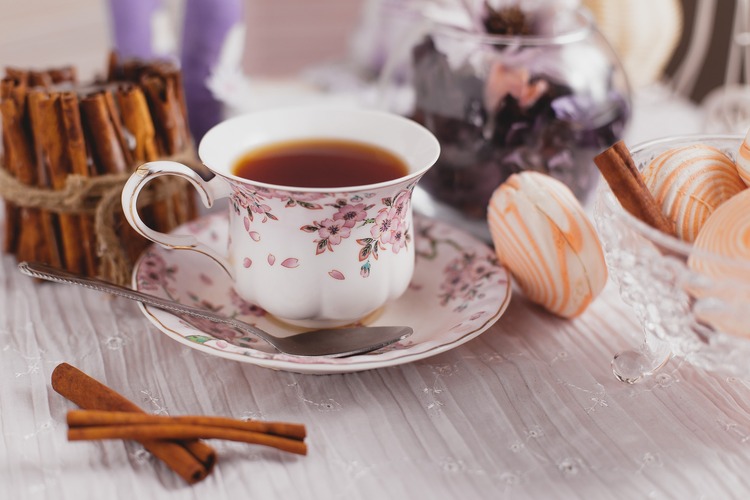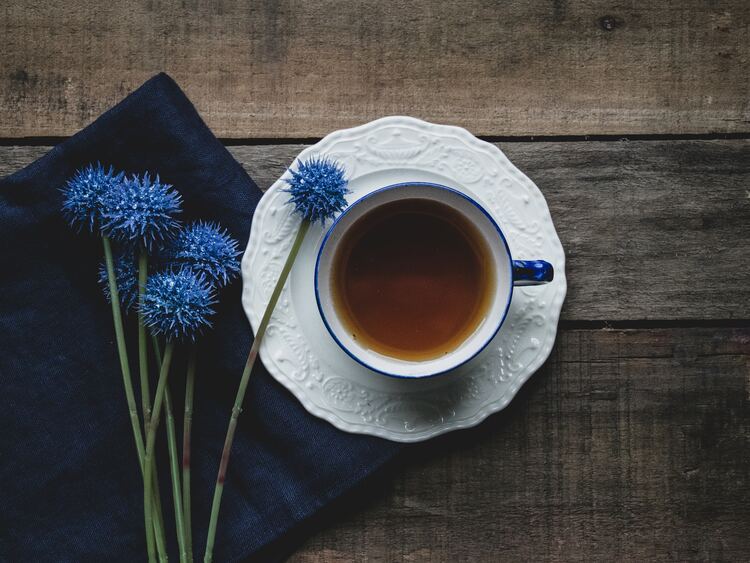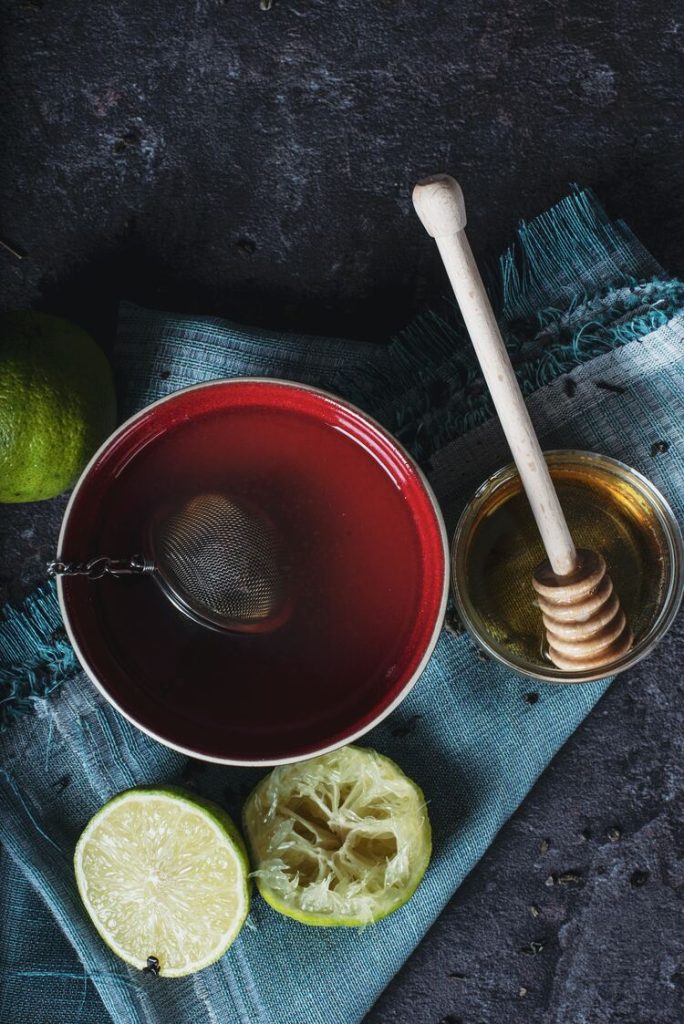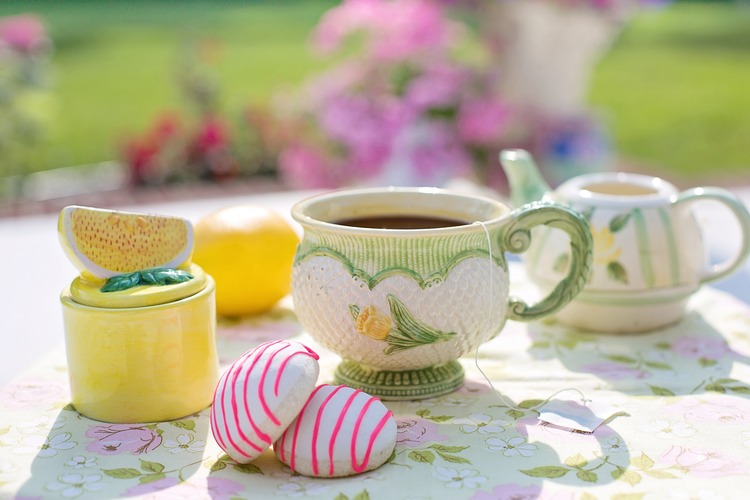What does Irish breakfast tea taste like? This popular brew is known for its rich flavor and invigorating aroma, making it a beloved choice for tea lovers everywhere.
Irish breakfast tea is a blend of several different types of black tea, typically including Assam (India), Ceylon (Sri Lanka), and Kenyan teas. This combination creates a robust flavor with a malty undertone and a slightly bitter finish. The tea is often enjoyed with milk and sugar to balance the strong taste, but it can also be enjoyed on its own.
Keep reading to learn more about this prominent blend!
Please note: This article contains affiliate links, meaning I may earn a commission if you make a purchase by clicking a link. Of course, this comes at no extra cost to you and helps me keep offering readers solid information.

What is Irish Breakfast Tea?
If you’re a fan of black tea blends (like us!), you may have heard of Irish Breakfast Tea. This robust blend is perfect for starting your day off right (since its caffeine content is generally higher than other black tea blends). But what exactly is Irish Breakfast Tea, and what makes it so special?
Irish breakfast tea is a blend of tea leaves from several regions. The blend can vary depending on the brand, but most blends include tea leaves from Assam, Ceylon, and Kenya.
Assam is a region in India known for producing robust and malty black tea. Ceylon, now known as Sri Lanka, is another region famous for its black tea. Ceylon tea is known for its bright and bold flavor. Kenya is another renowned black tea production region known for its strong and full-bodied taste.
In addition to these regions, some Irish breakfast tea blends may include tea leaves from China. Chinese black tea is known for its rich and earthy flavor.
The blend is named after Ireland, where it is a popular morning beverage. However, it is also enjoyed in other parts of the world, particularly in the United Kingdom and the United States. While its exact origins are not definitively known, it is believed to have been developed in the 19th century.
What Does Irish Breakfast Tea Taste Like?
When you sip Irish Breakfast Tea, you’ll notice a bold and full-bodied flavor distinct from other types of tea. The tea is known for its malty taste, resulting from the blend of black teas used to make it. The malty flavor is one of the most prominent characteristics of Irish Breakfast Tea.
In addition to the malty flavor, Irish Breakfast Tea has a slightly astringent taste. This is due to the tannins in the tea, which are natural compounds found in tea leaves. The astringency gives the tea a slight bitterness, but it’s balanced by a subtle sweetness that rounds out the flavor profile.
Some variations of this tea may have subtle earthy or woody undertones, which can add complexity to the flavor profile.
When brewed, Irish Breakfast tea typically has a bright and coppery-red liquor, which is visually appealing and indicates its intense flavor.
Overall, this blend is a great way to start your day and will provide you with the energy you need to tackle whatever comes your way.

How to Make Irish Breakfast Tea
Making a perfect cup of Irish breakfast tea is simple. Here are the steps you can follow:
- Start by boiling fresh water in a kettle. The temperature should be around 212°F (100°C).
- Warm up your teapot by rinsing it with hot water. This will help to keep your tea hot for longer.
- Add 1-2 teaspoons of tea leaves per cup to your teapot. You can adjust the amount of tea according to your taste preference.
- Pour the hot water over the tea leaves and let it steep for 3-5 minutes. The longer you steep the tea, the stronger the flavor will be. However, be careful not to over-steep the tea as it can become bitter.
- Once the tea is steeped, strain the tea leaves and pour the tea into your cup.
- Add milk and sugar to taste. You can also enjoy your tea without milk or sugar.
- Sit back and enjoy your freshly brewed cup of tea.
Remember, the key to making a great cup of Irish breakfast tea is to use high-quality tea leaves, fresh water, and the right steeping time. Experiment with different amounts of tea, steeping times, and milk and sugar ratios until you find your perfect cup.

What to Serve with Irish Breakfast Tea
When it comes to serving Irish breakfast tea, a few classic options pair perfectly with this tea’s rich and bold flavor. Here are some ideas for what to serve alongside your cup of tea.
Traditional Irish Breakfast
If you enjoy a full Irish breakfast, a few classic items pair perfectly with Irish breakfast tea. These include:
- Bacon: The salty and savory bacon flavor perfectly complements the bold and robust tea flavor.
- Eggs: Whether you prefer scrambled, fried, or poached, eggs are a staple of any traditional Irish breakfast and pair well with a cup of tea.
- Scones: A warm and buttery scone is the perfect accompaniment to a cup of tea. You can enjoy them plain, with jam, or with a drizzle of honey.
- Honey: A touch of honey can add sweetness to your tea and pair well with the rich flavor of Irish breakfast tea.
Breakfast Foods
This blend can also be enjoyed alongside a variety of other breakfast foods, such as:
- Toast: A slice of toast with butter and jam is a simple and delicious option to enjoy with your tea.
- Oatmeal: A warm bowl of oatmeal with a drizzle of honey is a comforting and filling breakfast that pairs well with Irish breakfast tea.
- Yogurt: If you prefer a lighter breakfast, a cup of yogurt with fresh fruit and granola can be a refreshing and satisfying option.
Other Foods
Here are other ingredients I enjoy pairing with my tea:
- Smoked Salmon: For a savory pairing, smoked salmon works exceptionally well with Irish Breakfast tea. The tea’s strength balances the richness of the salmon, and the smoky flavors complement each other nicely.
- Cheese and Crackers: The tea’s strong flavor pairs beautifully with various cheeses, such as cheddar or gouda. Enjoying a cheese and cracker platter while sipping the tea allows for a delightful interplay of flavors.
- Dark Chocolate: If you have a sweet tooth, try pairing Irish Breakfast tea with a piece of dark chocolate. The tea’s robustness can stand up to the intensity of dark chocolate, creating a harmonious combination.

Irish Breakfast Tea vs. English Breakfast Tea vs. Scottish Breakfast Tea
Alright, so you may have heard about different breakfast blends. The most well-known are the English, Scottish, and Irish ones. While these may seem similar, some differences set them apart. We explore the similarities and differences below.
Similarities
- Black Tea Base: All three blends are made primarily from black tea leaves, typically sourced from different regions (mainly Assam, Ceylon, and Kenya). Black tea is known for its robust flavor, making it a common choice for breakfast teas.
- Bold and Full-Bodied Flavor: English, Irish, and Scottish Breakfast teas are all known for their rich and full-bodied taste profiles. They are designed to provide a strong cup of tea.
- Add-ons: The three blends are often enjoyed with milk and sugar
Differences
- Blend Composition: The specific blend composition varies between the three teas. Scottish Breakfast tea typically includes a higher proportion of Assam tea compared to the other two.
- Flavor Profile: English Breakfast tea is often described as robust and malty, balanced and slightly earthy. Irish Breakfast tea tends to have a stronger and more intense taste, with a pronounced malty and sometimes slightly astringent character. Scottish Breakfast tea leans towards a rich and smooth flavor, focusing on the maltiness and full-bodied nature of the tea.
- Strength: In terms of strength (caffeine content), Irish Breakfast tea is often considered the strongest among the three, known for its powerful flavor. English Breakfast tea is generally milder than Irish Breakfast tea but still provides a satisfying and full-bodied taste. Scottish Breakfast tea falls somewhere in between, typically offering a robust cup without being as intense as Irish Breakfast tea.
- Regional Preferences: These teas are associated with their respective regions, and their popularity may vary accordingly. English Breakfast tea is commonly consumed throughout the United Kingdom, while Irish Breakfast tea is more prevalent in Ireland. Scottish Breakfast tea, as the name suggests, is often preferred in Scotland.
- Brands: In terms of brands, Irish Breakfast Tea is often associated with Robert Roberts, while Lyons and Bewley’s are popular brands of tea in Ireland. PG Tips and Twinings are well-known brands of English Breakfast Tea, while Scottish Blend and Brodies are popular brands of Scottish Breakfast Tea.
To sum it up, each breakfast tea has its unique flavor profile, and it’s up to you to decide which one you prefer. Try them all (if you have not already done so) and pick your favorite.

Health Benefits and Side Effects of Irish Breakfast Tea
It is time to discuss this blend’s health benefits and side effects (nothing to worry about, but I am including them for your awareness).
Health Benefits
Irish breakfast tea has a high caffeine content, which can boost energy and help improve your mental alertness. Additionally, it contains antioxidants that can help protect your cells from damage caused by free radicals. Some of the other potential health benefits include:
- Improved digestion: The tannins in Irish breakfast tea can help soothe an upset stomach and reduce bloating.
- Lowered risk of heart disease: Studies have shown that regular consumption of black tea, which is what Irish breakfast tea is made from, can help reduce your risk of developing heart disease.
- Improved oral health: The fluoride in Irish breakfast tea can help strengthen your teeth and reduce your risk of developing cavities.
Side Effects
While Irish breakfast tea can offer several health benefits, it can also have some side effects, mainly if consumed in large quantities. Some of the potential side effects include:
- Increased caffeine levels: Drinking too much Irish breakfast tea can lead to increased caffeine levels, which can cause jitters, anxiety, and difficulty sleeping.
- Upset stomach: While Irish breakfast tea can help soothe an upset stomach, drinking too much can cause stomach irritation and discomfort.
- Dehydration: Irish breakfast tea is a diuretic, which can cause you to lose more fluids than you take in. This can lead to dehydration if you don’t drink enough water.
Remember, moderation is essential in tea (and caffeinated beverages in general).
Buying Recommendations
This is the section where we share our favorite product recommendations with you. Take a look below:


Taylors of Harrogate Irish Breakfast

Twinings Irish Breakfast Individually Wrapped Black Tea Bags

I want to conclude by saying Irish Breakfast tea is more than just a beverage. It is a cultural icon that represents the warmth and hospitality of the Irish people, the beauty of Ireland, and the richness of Irish culture.
Here at Coffee & Tea Kingdom, we love to try new flavors, but we also enjoy learning about the aspects that make certain ingredients or products special. We desire to pass on part of the cultural heritage behind the drinks we present on this website.
It is your turn to savor the richness of Irish breakfast tea and maybe learn more about the stunning place it comes from. Until next time!
To you, what does Irish breakfast tea taste like?
More About Black Tea
The Process of Making Black Tea
What Does Black Tea Taste Like?
What Does Assam Tea Taste Like?
What Does Chai Tea Taste Like?